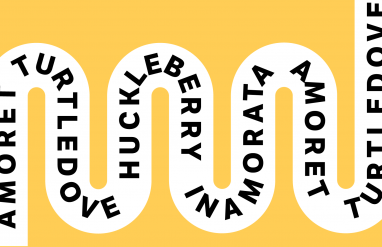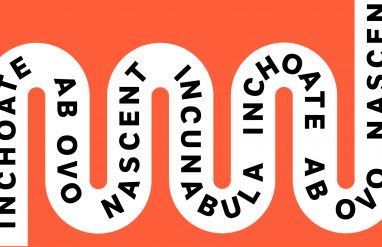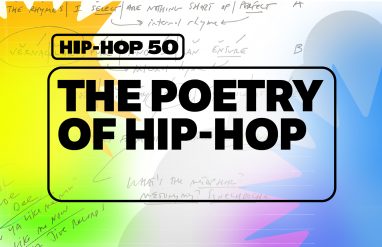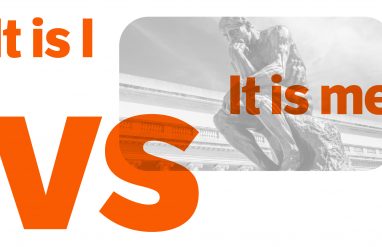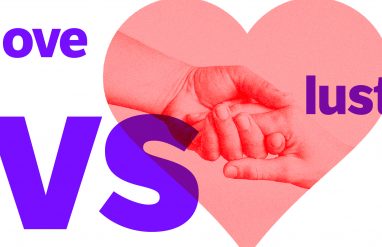When we think of poetry lessons in school, we tend to think about flowery old sonnets (which can be great!). But poetry can also be powerful and modern. And no poetry is as powerful and popular as the poetry that’s at the core of the global phenomenon known as hip-hop.
Rappers’ rhymes push poetry to new limits, but they are rooted in the same principles.
In this lesson on the poetry of hip-hop, we’ll cover essential poetry terminology like meter and cadence as well as hip-hop specific terms like bars and flow—along with explanations of how they work and examples from hip-hop lyrics.
By the final rhyme, you’ll have the knowledge and vocabulary to more deeply appreciate the poetry of hip-hop—and poetry in general!
verse, bar, stanza
In poetry, the word verse can be used to refer to a single line of a poem.
In hip-hop, the word bar is often used similarly to mean a single line of lyrics.
Here’s an example of a bar from André 3000 in “Ms. Jackson” by Outkast:
“Forever never seems that long until you’re grown.”
A stanza is a set of lines of poetry—usually around four. Typically, the lines of a stanza have something in common or are about the same thought.
Here is an example from “It’s Tricky” by Run DMC:
“In New York, the people talk and try to make us rhyme
They really hawk, but we just walk because we have no time
And in the city, it’s a pity ’cause we just can’t hide
Tinted windows don’t mean nothin’, they know who’s inside”
In hip-hop, a stanza is most commonly called a verse. Hip-hop verses vary in length but commonly consist of 16 bars (lines), often made up of four sections with four bars each.
rhyme scheme
A poem’s rhyme scheme is its rhyming pattern—how each line rhymes (or doesn’t rhyme) with another. For example, if a poem has an ABBA rhyme scheme, it means that its first and fourth lines rhyme and that its second and third lines rhyme. One of the most popular rhyme schemes is one in which lines rhyme in pairs: AABBCCDD. But rhyme schemes can get incredibly complex, including through the use of internal rhymes, which we’ll cover soon.
Remember, in hip-hop and poetry in general, poets often take poetic license with the words they rhyme—the words may not always rhyme exactly, but this often produces the most interesting rhymes.
Here is an example of an AABB rhyme scheme from “Ladies First” by Queen Latifah:
“I break into a lyrical freestyle (A)
Grab the mic, look into the crowd and see smiles (A)
Cause they see a woman standing up on her own two (B)
Sloppy slouching is something I won’t do (B)”
Here is an example of an ABBA rhyme scheme from “One Dance” by Drake:
“Strength and guidance (A)
All that I’m wishing for my friends (B)
Nobody makes it from my ends (B)
I had to bust up the silence (A)”
end rhyme
An end rhyme is a rhyme of the last syllables of separate lines. This type of rhyme is extremely common in poetry (and hip-hop).
Here are examples of end rhymes from “Can I Kick It?” by A Tribe Called Quest:
“A rhythm recipe that you’ll savor
Doesn’t matter if you’re minor or major
Yes, the Tribe of the game we’re the player
As you inhale like a breath of fresh air”
Here is another example of end rhyme from “Black Friday” by Lil’ Kim:
“I’m the blueprint, you ain’t nothin’ brand new
Check your posters and videos, you’ll always be number two”
beginning rhyme
The term beginning rhyme (also called head rhyme or initial rhyme) refers to the repetition of consonant sounds at the beginning of words. This is more commonly known as alliteration.
Here is an example of a beginning rhyme from “Alphabet Aerobics” by Blackalicious:
“My mind makes marvelous moves, masses
Marvel and move, many mock what I’ve mastered”
internal rhyme
An internal rhyme is a rhyme that happens in the middle of a line of poetry. An internal rhyme can happen within a single line or over multiple lines.
Here is an example of internal rhyme from “The Fire (feat. John Legend)” by The Roots:
“One love, one game, one desire
One flame, one bonfire, let it burn higher”
assonance
Assonance is the repetition of the same or similar vowel sounds. Rhyming often involves assonance, but examples of assonance don’t necessarily need to fully rhyme, since they often rely on internal vowel sounds.
Here is an example of assonance from “Lose Yourself” by Eminem. Notice how all of the bolded words don’t fully rhyme, but all have the same vowel sounds:
“His palms are sweaty, knees weak, arms are heavy
There’s vomit on his sweater already, mom’s spaghetti”
Here is another example of assonance from “Lost Ones” by Lauryn Hill:
“Some wan’ play young Lauryn like she dumb
But remember not a game new under the sun
Everything you did has already been done
I know all the tricks from Bricks to Kingston”
consonance
Consonance is the repetition of the same or similar consonant sounds.
Here is an example of consonance from “How Ya Like Me Now” by Kool Moe Dee. Notice how the endings of the bolded words all have the same consonants:
“Again, respect, I come correct
The rhymes I select are nothing short of perfect”
meter
In poetry, meter refers to the structure, rhythm, and length of lines. Typically, meter involves arranging stressed and unstressed syllables in a certain order to create a desired rhythm. For example, iambic tetrameter typically consists of a line of eight syllables that alternates between unstressed and stressed syllables.
Looking at “How Ya Like Me Now” by Kool Moe Dee again, the lyrics have an example of iambic tetrameter:
“Again, respect, I come correct”
Get to know some of the key elements of poetic foot and meter.
cadence, flow
Cadence refers to changing rhythm and voice when reading poetry. Often, a poet sets the cadence by using specific words or rhymes.
In hip-hop, the word flow is used similarly to refer to how the performer specifically changes their voice to fit with a musical beat through lyrics, speed, and pitch.
Let’s look at example of cadence and flow from “Rapper’s Delight” by Sugarhill Gang:
“I said a hip-hop, the hippie, the hippie
To the hip, hip-hop and you don’t stop the rockin’
To the bang-bang boogie, say up jump the boogie
To the rhythm of the boogie, the beat”
All of these lines are around the same number of syllables (10-12). Additionally, this section uses specific words and repetitions to match the rhythm of the accompanying music. When these lyrics are rapped, the speed and pitch are adjusted to make the lyrics flow with the rhythm of the music.
double entendre
A double entendre is a word, phrase, or line that can be interpreted in two ways simultaneously. Poetry frequently relies on multiple meanings and interpretations to express complex ideas.
Here is an example of a double entendre from “Return of Simba” by J. Cole:
“Cause I only made classics, now what that take? Timing
Cole under pressure, what that make? Diamonds”
When coal is put under pressure by natural forces, it produces diamonds. That’s one meaning. But J. Cole is using his name (a homophone of coal) to produce another meaning: when under pressure—working at the top of his game—he produces great songs featuring lyrical gems (diamonds).
But wait. He’s also saying his artistry produces wealth (diamonds and the money to buy them). And there’s even more: he’s also implying that the albums he produces will be certified as “diamond” (more than 10 million in sales). That’s a quadruple entendre, folks.
Here’s a final poetic thought from Jay-Z, who’s also known for packing multiple meanings into his verses: “A poet’s mission is to make words do more work than they normally do, to make them work on more than one level.”


